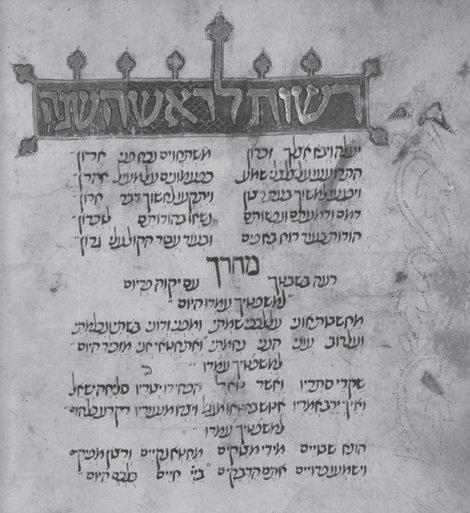
2 minute read
10 Sweet Facts about Rosh Hashanah
M U LT I P L E N E W Y E A R S
Rosh Hashanah is not the only Jewish new year. There are three more on the Jewish calendar: The first day of Nisan, for monarchial and holiday purposes; the fifteenth day of Shevat, for trees; and the first day of Elul, for the tithing of animals. The Talmud, Tractate Rosh Hashanah, explains the function of each of these dates.
Advertisement
DAY OF JUDGMENT The Talmud teaches that Rosh Hashanah is the “Day of Judgment.” According to Rabbi Shlomo Efraim Luntshitz (1550–1619), this fact is not stated clearly in the Torah to underscore that we are meant to treat each day as a day of judgment.
DAYS OF THE WEEK
The way the Jewish calendar is arranged, the first day of Rosh Hashanah cannot fall on Sunday, Wednesday, or Friday. This ensures that Yom Kippur won’t be on a Friday or Sunday (which avoids having two consecutive days when all forms of labor are forbidden), and that the seventh day of Sukkot won’t be on Shabbat (so we can observe the custom of the willow on this day). ANSWERED PRAYERS
The Bible documents how Sarah, Rebecca, and Chanah each struggled for a long time to conceive a child and how their wishes were finally fulfilled. The Talmud (Rosh Hashanah 11a) notes that their prayers were answered on Rosh Hashanah.
SEPHARDIC CUSTOM
Sephardic communities begin their prayers on Rosh Hashanah eve by reciting a poem composed in Gerona during the thirteenth century called “Achot Ketanah.” The chorus of this poem, repeated eight times, states: “Bring an end to the year and its curses.” In the final stanza, the chorus changes to: “Begin the new year and its blessings.”
ETYMOLOGY OF MACHZOR
The word machzor means “cycle.” Originally, prayers for all holidays were included in one volume, which was appropriately called machzor as it cycled through the prayers of the year. Later, the prayers for each holiday were separated into distinct volumes, but the name machzor has endured.
YEMENITE CUSTOM
In Yemenite communities, the cantor sings a short prayer following the blowing of the shofar, which, in part, reads: “Just as you heard the sound of this shofar, so shall Zerubbabel arrive and sound his great shofar and gather you from the corners of the earth and return you with G-d’s help.” (Zerubbabel, a descendant of King David, led the return from Babylonian captivity and laid the foundation of the Second Temple. His name, therefore, is at times used as a symbol for the Messiah.)
ANCIENT MACHZOR
Machzor Catalonia is a handwritten machzor composed on parchment around the year 1280 in Catalonia. It survived the Expulsion of the Jews from Spain in 1492 and was in Berlin on Kristallnacht, in 1938, but was unscathed. It is housed today at the National Library of Israel.
SANS NAP
Even though napping on Shabbat is a proper way to celebrate the day of rest, the Code of Jewish Law states that on Rosh Hashanah we make a point of not napping.
WORLD RECORD
According to the Guinness World Records, the largest shofar ensemble involved 1,022 participants at an event in Whippany, New Jersey, on Sunday, 21 September 2014, a few days before Rosh Hashanah.


